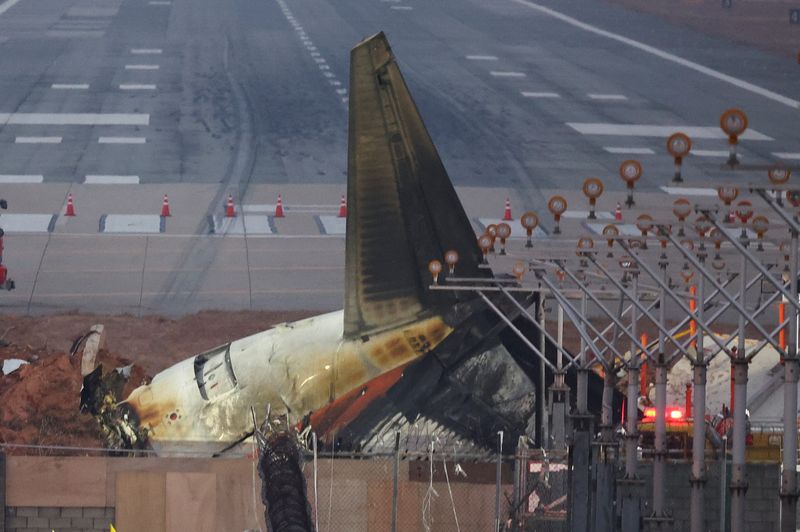
By Hyunjoo Jin and Jack Kim
SEOUL () -The flight data and cockpit voice recorders on the Jeju Air jet that crashed on 29 December stopped recording about four minutes before the airliner hit a concrete structure at South Korea's Muan airport, the transport ministry said on Saturday.
Authorities, who are investigating the worst disaster on South Korean soil, in which 179 people died, plan to analyse why the "black boxes" stopped recording, a statement from the ministry explains.
The voice recorder was first looked at in South Korea, and after some details were discovered to be missing, it was sent on to a laboratory run by the U.S. National Transportation Safety Board, as stated by the ministry.
In cooperation with the US safety regulator, the US Ministry of Justice says the damaged flight data recorder has been taken to the United States for analysis.
Jeju Air flight 7C2216, departing from Thailand's capital Bangkok bound for Muan in south-western South Korea, overshot the runway at the regional airport and crash-landed after hitting a nearby embankment, resulting in a large explosion.
The pilots informed air traffic control that their aircraft had been struck by a bird and called for assistance about four minutes prior to the crash. They subsequently impacted an embankment, resulting in an explosion. Two injured crew members, who were located in the tail section, were rescued.
Two minutes before the Mayday distress call, air traffic control cautioned of "bird activity". At which point, the pilots declared an emergency and chose to abort the landing attempt, opting instead for a go-around.
Rather than executing a full stop, the low-cost airline's Boeing 737-800 aircraft took a sharp turn and approached the airport's sole runway from the opposite direction, crash-landing without retracting the landing gear.
Soi Jai-dong, a former transport ministry accident investigator, described the discovery of missing data from the critical final minutes as surprising, implying that both main and back-up power sources may have been disabled, an unusual occurrence.
The transport ministry stated that further information available would be utilised during the investigation and that the inquiry would be conducted transparently, with information being disseminated to the victims' families.
A few relatives of the victims have stated that it's not right for the transport ministry to head the investigation, suggesting instead that independent specialists, under the families' own recommendations, should be involved.
The investigation into the crash has also focused on the embankment, which was designed to support the "localiser" system used to aid aircraft in landing, including why it was constructed with such a rigid material and so close to the end of the runway.
Reporting by Hyunjoo Jin and Jack Kim; Editing by William Mallard

